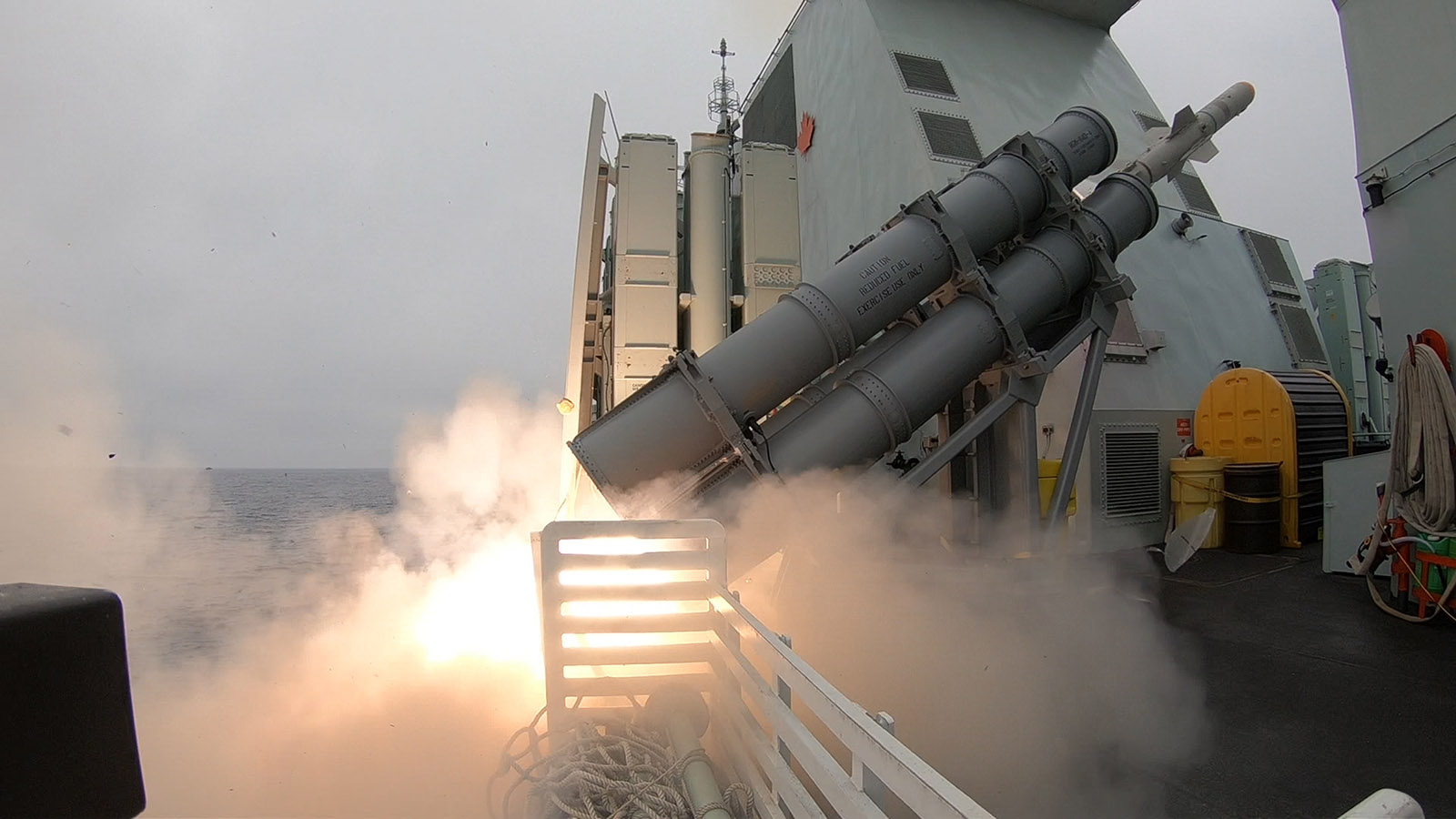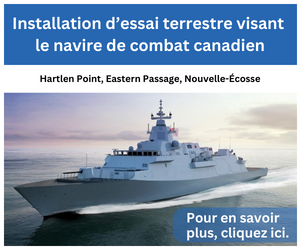
SOUMIS
Full spectrum targeting update
Par MRC
The Royal Canadian Navy (RCN) is successfully forging ahead with full spectrum targeting that will allow seamless interoperability across the CAF as well as with allies for future operations.
In 2016, the Chief of Defence Staff, Gen Jonathan Vance, directed the CAF to establish a Joint Targeting Enterprise to conduct full spectrum targeting, which for the RCN includes the use of both munitions (missiles and naval gunfire support) and non-munitions (influence and information operations) capabilities.
The enterprise, involving the RCN, the Canadian Army, and the Royal Canadian Air Force, is a command-led and intelligence supported staff process. Although the concept of targeting is not new to the RCN, it is now formalized with clear lines of responsibility between organizations involved in the targeting cycle – from approvals to weapons effects.
The RCN has developed the requisite staff procedures and incorporated targeting tools such as the Joint Automated Deep Operations Coordination System (a command and control tool that helps provide strategic coordination and situational awareness at the operational and tactical level of operations), as well as communication systems and weapons (like the land attack version of the Harpoon missile), to conduct targeting missions in support of land or air campaign objectives.
“From the RCN’s perspective, the new targeting process involves ships reaching back to higher headquarters to receive targeting orders that have been approved by a higher command authority,” says Capt(N) John Tremblay, Director Naval Information Warfare. Importantly, he confirms that the joint targeting capability does not prevent the commanding officer of a Canadian warship from taking appropriate action to protect one of Her Majesty’s Canadian Ships.
Testing Targeting Concepts
Planners determined early on that the best way to confirm how well the new system would function, was to test it during an existing weapon firing exercise.
As such, the new targeting concepts were overlaid onto a Harpoon Block II missile firing during a Joint Land Targeting Exercise (JOLTEX). Three JOLTEXs have now been successfully completed off the coasts of San Diego, and Norway. During each exercise, lessons learned were gathered and used to validate the new process and highlight where improvements needed to occur.
“During JOLTEX 18, the targeting process was conducted thoroughly, as if operating in a coalition against a hostile nation,” says Cdr Victoria DeVita, Maritime Component Commander, Plans and Targeting Officer. “All three exercises were deemed successful based on where progress had been achieved, and the RCN met every objective in fully developing a maritime targeting capability.”
Cdr DeVita adds that the strategic goal of JOLTEX 18 was to connect every targeting stakeholder across the CAF. The firing unit was HMCS Ottawa, a west coast ship, while the target development occurred in the RCN node of the Joint Targeting Intelligence Centre located in Ottawa at the Canadian Joint Operations Command (CJOC). The mission was planned by the Maritime Component Commander’s staff in Halifax.
“CJOC has been working hand in glove with the RCN through the Maritime Component Commander and fleet staffs to ensure that the existing RCN weapon systems and targeting capabilities are fully nested within the overall CAF targeting enterprise,” says LGen Michael Rouleau, CJOC Commander. “The extremely successful JOLTEX 18, building on previous readiness events, provided a tremendous opportunity to train multiple staffs across the spectrum of CAF targeting and to push this important capability forward.”
Conducting complex missions like this involves the production of a significant amount of intelligence to support detailed planning and eventual execution, explains Cdr DeVita. “It required many moving parts and coordination among the different staffs. The penultimate step involved presenting the targets at a strategic targeting board to the Chief of Defence Staff wherein he approved the targets for HMCS Ottawa to engage.”
Overall, “the RCN’s successful application of joint targeting means that Canada’s navy now possesses the necessary means to bring the full weight of the CAF’s targeting capabilities to bear in any future conflict,” says Gen Vance. “Bravo Zulu to the RCN!”
Training to better understand targeting process
During the initial stages of the journey towards the delivery of a CAF joint targeting capability, Capt(N) Tremblay notes it became obvious that staff officers required training to better understand the targeting process. These were officers who were assigned staff duties to write procedures, deliver communications tools and develop the intelligence doctrine. The courses for Canadian targeting officers are run at the Canadian Forces Warfare Centre in Ottawa. Canadian targeting staff officers have also participated in targeting courses in the United States and at the NATO school in Oberammergau, Germany.
“The development of this capability keeps us aligned with our NATO and Five Eyes (Canada, Australia, New Zealand, the United Kingdom and the United States) partners,” says Defence Minister Harjit Sajjan. “It is a significant step forward and highlights one of the main pillars of Strong, Secure, Engaged – proactively adapting to emerging challenges by harnessing new technologies, fostering a resilient workforce and leveraging innovation, knowledge and new ways of doing business.”
The RCN will continue to grow and develop this capability in the coming years, alongside the Canadian Army and the RCAF, according to Capt(N) Tremblay.
“The next steps will involve understanding how to conduct information operations in a naval context, along with further development of our staffing procedures and training a cadre of targeting qualified RCN personnel in Ottawa, on both coasts and within our fleet.”






